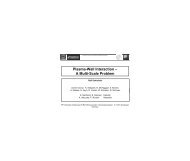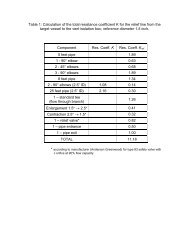The Nu-SNS proposal - ORNL Physics Division - Oak Ridge ...
The Nu-SNS proposal - ORNL Physics Division - Oak Ridge ...
The Nu-SNS proposal - ORNL Physics Division - Oak Ridge ...
You also want an ePaper? Increase the reach of your titles
YUMPU automatically turns print PDFs into web optimized ePapers that Google loves.
<strong>The</strong> failure of this prompt supernova mechanism sets the stage for a delayed mechanism,<br />
wherein the intense neutrino flux, which is carrying off the binding energy of the proto-neutron<br />
star (PNS), heats matter above the neutrinospheres and re-energizes the shock [3,4]. <strong>The</strong> heating<br />
is mediated primarily by the absorption of electron neutrinos and antineutrinos on the<br />
dissociation-liberated free nucleons behind the shock. Figure 3.1 illustrates the geography of the<br />
neutrino reheating mechanism. Although four decades of supernova modeling have established<br />
this textbook explanation, models of this mechanism frequently fail to produce explosions, thus<br />
fundamental questions about the explosion mechanism remain.<br />
Figure 3.1 Geography of the neutrino reheating mechanism. <strong>The</strong> neutrinospheres<br />
(the effective neutrino radiating surfaces) lie at the PNS surface. <strong>The</strong> stalled<br />
shock sits far above, separating rapidly infalling matter in the envelope from the<br />
matter slowly settling on the PNS. This settling matter between the<br />
neutrinospheres and the shock is divided into cooling and heating regions, where<br />
the matter is respectively losing and gaining energy from the neutrino field. <strong>The</strong><br />
gain radius separates these regions.<br />
ν-<strong>SNS</strong> Proposal 18 8/4/2005



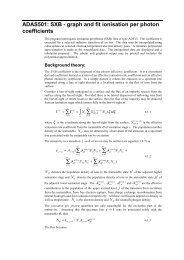
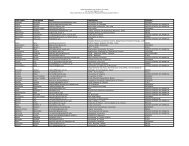
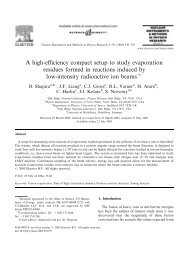
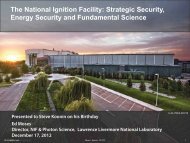

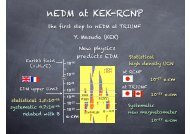
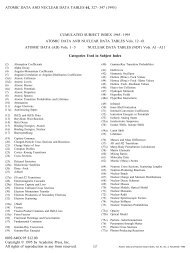


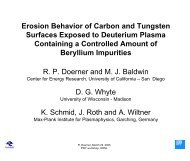
![Mixed-mode Calculations within the Nuclear Shell Model [pdf]](https://img.yumpu.com/28265410/1/190x146/mixed-mode-calculations-within-the-nuclear-shell-model-pdf.jpg?quality=85)
